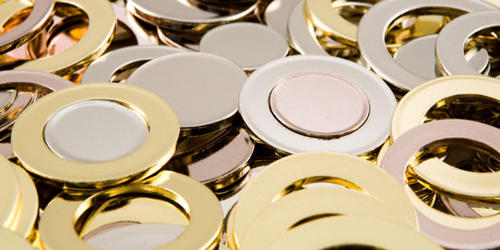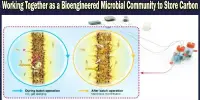Rhodium is a silver-white metallic element that is highly reflective and resistant to corrosion. Rhodium trifluoride is the inorganic compound with the formula RhF3. It is a red-brown, diamagnetic solid. It is used as a finish for jewelry, mirrors, and searchlights. It is used in hydrosilylation, hydrogenation, carbonylation, oxidation, arylation.
Rhodium trifluoride is the inorganic compound with the formula RhF3. It is a red-brown, diamagnetic solid.
Properties
The trihydrate is a dark red powder; deliquescent; loses water at 100°C; very soluble in water; soluble in alcohol and hydrochloric acid; insoluble in ether. Brownish-red powder; deliquescent; decomposes on heating at 450 to 500°C; sublimes at 800°C; insoluble in water, water-solubility, however, depends on the method of preparation; soluble in alkali hydroxide or cyanide solutions; soluble in aqua regia.
- Formula: RhF3
- Hill system formula: F3Rh1
- Formula weight: 159.901
- Class: fluoride
- Color: red
- Appearance: crystalline solid
- Melting point: 600°C (sublimes)
- Density: 5400 kg m-3
- Boiling point: 717 °C (730 mmHg)
- Water Solubility: Insoluble in water. Soluble in hydroxide and cyanide solutions.
- Sensitive: Hygroscopic
- Stability: hygroscopic
Synthesis and structure
The compound is prepared by fluorination of rhodium trichloride:
2 RhCl3 + 3 F2 → 2 RhF3 + 3 Cl2
According to X-ray crystallography, the compound adopts the same structure as vanadium trifluoride, wherein the metal achieves octahedral coordination geometry.
Preparation
Rhodium trichloride is prepared by heating rhodium with chlorine gas at 250°C:
2Rh + 3Cl2 → 2RhCl3
Also, the chloride salt may be obtained by treating the yellow hydrous oxide, Rh2O3?5H2O, with hydrochloric acid. The solution is carefully evaporated to form a dark red and water-soluble salt, rhodium trichloride tetrahydrate. Heating the tetrahydrate in a stream of hydrogen chloride gas at 180°C forms the anhydrous salt, RhCl3.
Purification Methods
Probable impurities are KCl and HCl. Wash the chloride well with small volumes of H2O to remove excess KCl and KOH and dissolve it in the minimum volume of conc HCl. Evaporate it to dryness on a steam bath to give wine-red colored RhCl3.3H2O. Leave it on the steam bath until the odor of HCl is lost-do not try to dry further as it begins to decompose above 1000 to the oxide and HCl. It is not soluble in H2O but soluble in alkalis or CN solutions and forms double salts with alkali chlorides.
















